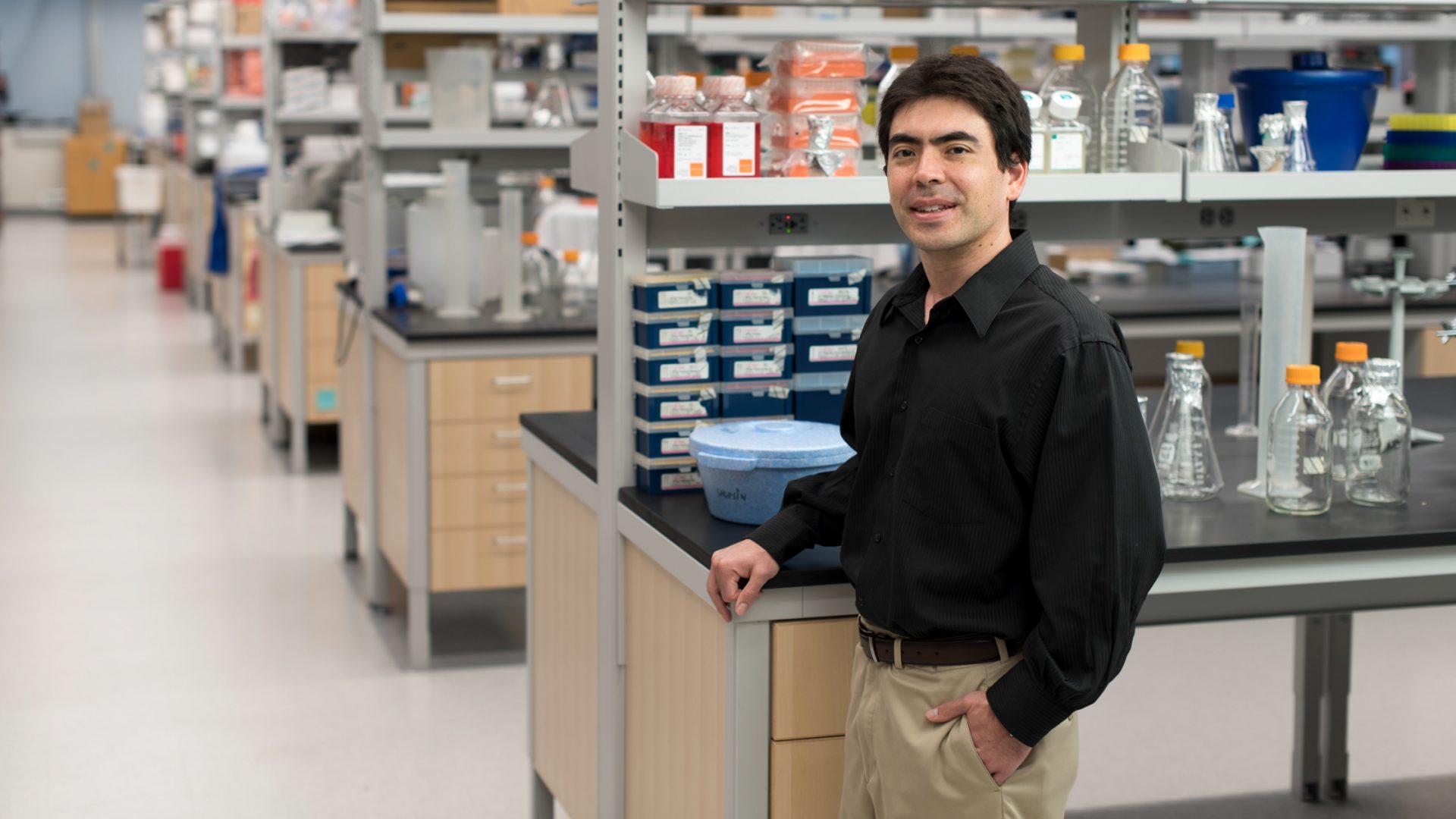Crohn’s disease is influenced by a complex mixture of genetic and environmental causes. Past studies have shown that a variant of the ATG16L1 gene is associated with increased risk of the disease. In mouse models, for example, viruses can trigger symptoms in animals bred with that mutation. Until recently, however, the process by which those pathogens activate the illness has remained unknown.
A pioneering study led by NYU Langone Health researchers, published in the journal Nature, has revealed a mechanism for the first time and points toward a new target for developing improved treatments.
“Our study suggests that a subgroup of intestinal T cells secrete a protein that protects Paneth cells from the effects of this mutation,” explains study co-senior author Ken H. Cadwell, PhD, the Recanati Family Professor of Microbiology. “When a virus infects patients with the risk allele, it can block production of the protein, tipping the balance toward a full-blown inflammatory disease.”
“Our study suggests that a subgroup of intestinal T cells secrete a protein that protects Paneth cells from the effects of this mutation. When a virus infects patients with the risk allele, it can block production of the protein, tipping the balance toward a full-blown inflammatory disease.”
Ken H. Cadwell, PhD
Shohei Koide, PhD, a professor of biochemistry and molecular pharmacology and a member of NYU Langone’s Perlmutter Cancer Center, also served as co-senior author of the new study.
Identifying a Protective Protein
Previous investigations of ATG16L1 have suggested a link between Paneth cells—intestinal epithelial cells crucial to regulating gut microbial communities—and the inflammation characteristic of Crohn’s disease. Mice with the mutant gene, as well as humans with Crohn’s disease who have two copies of the ATG16L1 risk allele, often display abnormalities in Paneth cells. In experiments with mutant mice raised in a sterile environment, these abnormalities emerged only after the animals were infected with murine norovirus (MNV).
In their recent study, NYU Langone researchers set out to learn how this damage took place. They studied groups of mice with and without the Atg16l1 mutation. In both groups, intestinal T cells known as γδ intraepithelial lymphocytes (IELs) secreted apoptosis inhibitor 5 (API5), a protein that signals the immune system to stop attacking once a microbe has been subdued. When the mutant mice were infected with MNV, however, their γδ IELs lost the ability to secrete API5, leaving Paneth cells vulnerable to injury or destruction by a dysregulated immune response.
To see whether increasing API5 levels could have a protective effect, the team injected some of the mutant mice with the human version of the protein. All the treated animals survived, while half of the untreated group died.
In human gut tissue, the researchers found, patients with Crohn’s disease had between 5- and 10-fold fewer API5-producing T cells than those without the disease. When the team constructed intestinal organoids from people with the ATG16L1 risk allele, these “mini-guts” showed impaired growth and susceptibility to damage when exposed to tumor necrosis factor (TNF), a proinflammatory cytokine.
Treatment with API5 improved organoid viability and Paneth cell numbers, and enhanced their resistance to TNF-induced cell death.
A Potential Therapeutic Target
Other factors besides norovirus may play a similar role in “unmasking” the deleterious effect of the ATG16L1 variant.
“We found that Salmonella infection also suppresses API5 secretion, and previous research has shown an association between smoking and Paneth cell defects in mice and humans with ATG16L1 mutations. Rather than a specific microorganism or toxic trigger, it’s possible that multiple environmental stressors that disrupt IEL function can lead to Paneth cell dysfunction and disease in vulnerable individuals,” says Dr. Cadwell.
Beyond shedding light on the etiology of Crohn’s disease, the research raises the possibility of a novel approach to treatment.
“If Paneth cell abnormalities contribute to sustaining inflammation, combining anti-inflammatory agents with strategies that restore the protective function of IELs, such as API5 administration, could be particularly effective for reversing the course of the disease.”
Yu Matsuzawa-Ishimoto, MD, PhD
“Current therapies, which rely on immune suppression, put patients at high risk for infection and may become less effective over time,” says Yu Matsuzawa-Ishimoto, MD, PhD, a postdoctoral fellow in the Department of Microbiology and the study’s lead author. “If Paneth cell abnormalities contribute to sustaining inflammation, combining anti-inflammatory agents with strategies that restore the protective function of IELs, such as API5 administration, could be particularly effective for reversing the course of the disease.”
Disclosures
NYU Langone has patents pending (10,722,600, 62/935,035, and 63/157,225) for therapies developed from this treatment approach, from which Dr. Cadwell, Dr. Matsuzawa-Ishimoto, and NYU Langone may benefit financially. The terms and conditions of these relationships are being managed in accordance with the policies of NYU Langone.







